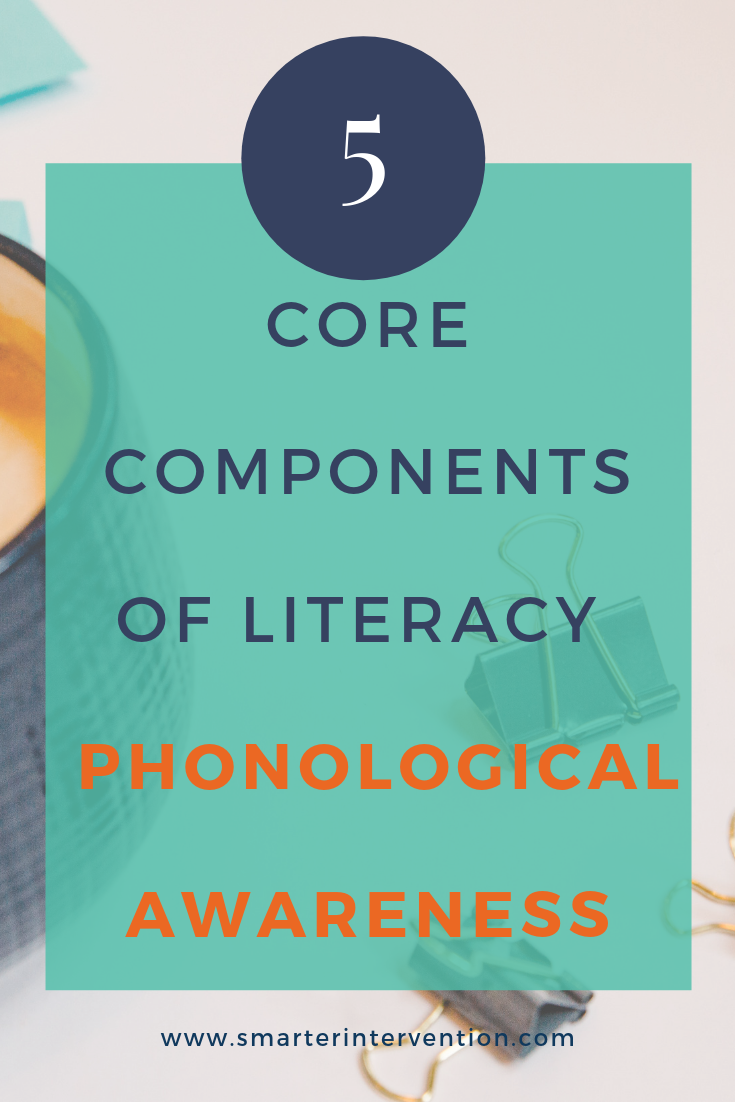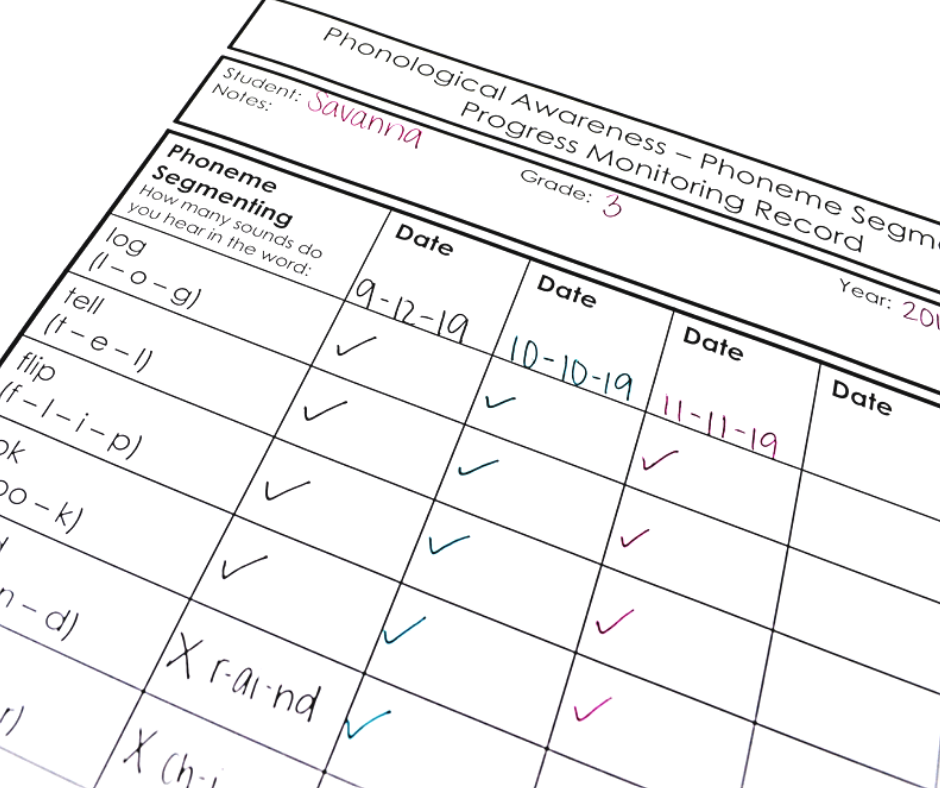5 Core Components of Reading - Phonological Awareness
Hey there friends!
So those of you who have hung around with us for a while know that we LOVE all things literacy and all things research. We wanted to take some time to really dive into the research and really dive into what needs to come together to have research-based instruction because it’s one of these questions we get A LOT!
In 2000, a large-scale meta-analysis was performed to look at all of the contributing factors to reading failure and reading success. It was out of this meeting that the “Big 5” or the 5 Core Components of Literacy was born.
The five core components of reading were identified as:
1. Phonological Awareness
2. Phonics
3. Reading Fluency
4. Vocabulary
5. Reading Comprehension
Now, we like to re-term this as the 5 Core Components of Literacy because reading and writing are reciprocal processes. It’s like two sides of the same coin.
And if you know us REALLY well, you also know that we are obsessed with…you guessed it -
The Literacy Processing Triangle
Essentially, the literacy processing triangle is the identification of the three core brain processes that must come together for effective reading and writing instruction.
We have Phonology, understanding the sound structure of our language, Orthography, understanding the visual print structure of our language, and Semantics, the meaning structure of our language.
We need to connect those three brain processes together in order to read and write effectively.
The findings of the National Reading Panel absolutely make sense because when we begin to map those abilities to the 5 Core Components of Literacy we can see why those aspects are so important!
Phonological Awareness is closely related to phonology.
Phonology is simply the study of the sound structure of our language. It includes things such as articulation (pronunciation of words), the ability to identify the beginning sounds of words, the ending sounds of words, being able to manipulate different parts of words, and generally having awareness of the individual syllables and sounds that create words. Having awareness of the sound structure of the English language is critical in completing this literacy processing triangle.
We cannot begin to “sound words out” if we don’t understand that letters represent sounds that string together to read words or pull apart to spell words.
We know that there are a lot of skills that go into phonological awareness and therefore it is critical that we understand a child’s ability in each of these areas in order to support the development of phonological awareness.
There are a number of skills that come together to create the Phonology bucket of foundational literacy development building blocks.
We like to think of each area of the literacy processing triangle (phonology, orthography, and semantics) as a bucket of skills a child has available to begin learning to read and spell. If they are missing certain skills in any of those categories we begin to create a shaky foundation for literacy development.
We must also realize that there are a number of different “building blocks” in each bucket.
Considering the image above we have a number of orange “phonology” building blocks. We talk all about the hierarchy of phonological awareness skills >>>here<<< if you want to check that out. One of the most important things we can do to get a good picture of what a child’s phonology building blocks look like is to provide an assessment to see how many blocks we are working with. If a child doesn’t have a block - that skill needs to be solidified.
You can grab our Phonological Awareness Progress Monitoring Assessment >>here.<<
It is important to realize that phonological awareness is a means to an end.
The reason we develop phonological awareness is to support reading and writing abilities. We don’t work on phonological awareness just to improve phonological awareness. We work on it as a part of the larger whole. If you’re interested in learning more about how we support students keeping in mind that each of the 5 Core Components is a piece of the larger whole - stick with us for the next few weeks where we will dive into phonics, reading fluency, vocabulary, and reading comprehension.
These 5 core components will be a crucial part of your instruction. If you are interested in learning more about materials and activities you can use to support all five core components of literacy (plus writing), then check out the 5CCL Activity Libary using the button below.




